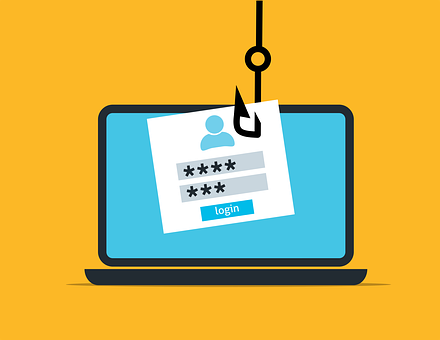A form of electronic digital currency is called cryptocurrency. Fraud with cryptocurrencies is on the rise and takes many different forms such as:

- Scams
- Ponzi schemes
- Well-known Pump and Dump theft tactics
It can be challenging to detect Bitcoin fraud, particularly in the fast-paced decentralised finance environment. The digital currency industry is highly unregulated, making it a haven for cybercriminals despite abundant opportunities and exciting enterprises.
How Crypto Fraud Happens
The first step in protecting your Bitcoin is to grasp its fundamental principles. Beginners who lack a firm grasp of how their wallet functions, private keys’ purpose, and who controls their Bitcoin are frequently targeted by frauds.
When asked in an interview about crypto fraud, Bitcode Method Official remarked that crypto remains boundless — unlike traditional banking, where our money is kept in safe, physical locations like the bank or a safety deposit box, crypto is not bound to any physical location. The owner of the private key for a cryptocurrency can move and use the money digitally.
Access to your cryptocurrency could be permanently lost if your private key is lost or stolen. This private key can be compared to your signature, necessary whenever you want to transfer or spend cryptocurrency.
To transfer coins, each wallet has a distinct private key that can be used. Wallets vary significantly in quality, especially in terms of security.
Examples of Crypto Fraud
Initial Coin Offerings
Initial Coin Offerings (ICOs), similar to an IPO, are used at the launch of cryptocurrency projects. Investing in a major initiative early could result in tremendous gains, which is why ICOs are exciting. Unfortunately, creating a phoney ICO requires minimal time or money from con artists.
Many fraudulent ICOs make huge return promises and capitalise on popular culture.
A fraudulent ICO’s designers keep most of the money in their wallets while observing more people swap dollars for their coins. Scam ICOs can appear extremely attractive on paper, with enormous “theoretical” profits. The market frequently has minimal liquidity, so they cannot sell their position even if a coin holder has made a 1000% profit.
Owners of a fraudulent ICO either sell most of their coins as the fraud spreads or all of their coins vanish at once.
Pump and Dump
Like fraudulent ICOs, pump-and-dump schemes can occur several times with the same coin. Most currency owners will artificially inflate a coin’s price. As investors rush to get in early, false statements, altered photos, and bogus testimonials can all cause a sudden price increase. The scammers suddenly dump all of their coins as the price reaches its fictitious peak, bringing the market to a halt.
Ponzi Schemes
Ponzi schemes rely on a constant flow of new investors to give early adopters fictitious returns. Bitconnect was one of the most notorious Ponzi schemes in the crypto sector. It advertised itself as a high-yield investment program.
After reaching a peak of almost $500, Bitconnect eventually crashed. Before the price of Bitconnect fell to less than one dollar, its founders made off with about $2 billion. Before its collapse, many people exposed Bitconnect as a scam, but not all Ponzi schemes are as blatant.
Theft
There are organised crime groups that prey on sizable exchanges and wallets. Cybercriminals frequently use phishing tactics to infiltrate computers and secure networks. Phishing works by deceiving visitors into opening a link and inputting their information into a malicious website created to look like a trustworthy one. Using this technique, cybercriminals can take private keys and login information.
Keyloggers, malware, and trojans may occasionally be employed to covertly scan networks for evidence of coin wallets or access to exchanges. The private key is taken when the user opens their wallet, and their money is transferred to the con artist’s wallet.
DeFi: the Target of Fraud
One of the main targets of cryptocurrency fraud is undoubtedly exchanges, where a single compromised system can defraud thousands of consumers at once. Exchanges must not only invest in network security but also safeguard their brand against imitation.
Scammers focus more on brand impersonation, phishing assaults, and malicious mobile apps to steal data and money from unwary customers as classic brute-force operations become more challenging.
The possibility of exchanges and official project pages being impersonated on social media, in emails, and during domain registration is constant. The trust between the customer and the brand can be impacted by even a small number of successful brand impersonation attacks.
It is incredibly challenging to manually report bogus accounts, issue takedown requests, and police communications. Thanks to improvements in artificial intelligence and machine learning, exchanges can now detect fraud and stop it entirely before it reaches clients.
Because of the market volatility associated with cryptocurrencies, the value of an investor’s assets fluctuates significantly. Criminals have seized this as an opportunity to commit fraud as more people have invested their money in cryptocurrency. Criminals promote schemes that, in some cases, promise big rewards through mining or investing in cryptocurrencies. Criminals frequently advertise on social media to entice you with claims of quick and easy money in exchange for your money or personal information. As investors, you should stay up to date with market scams and fraud by following publications like this.
Byline: Hannah Parker

 Hot Features
Hot Features













